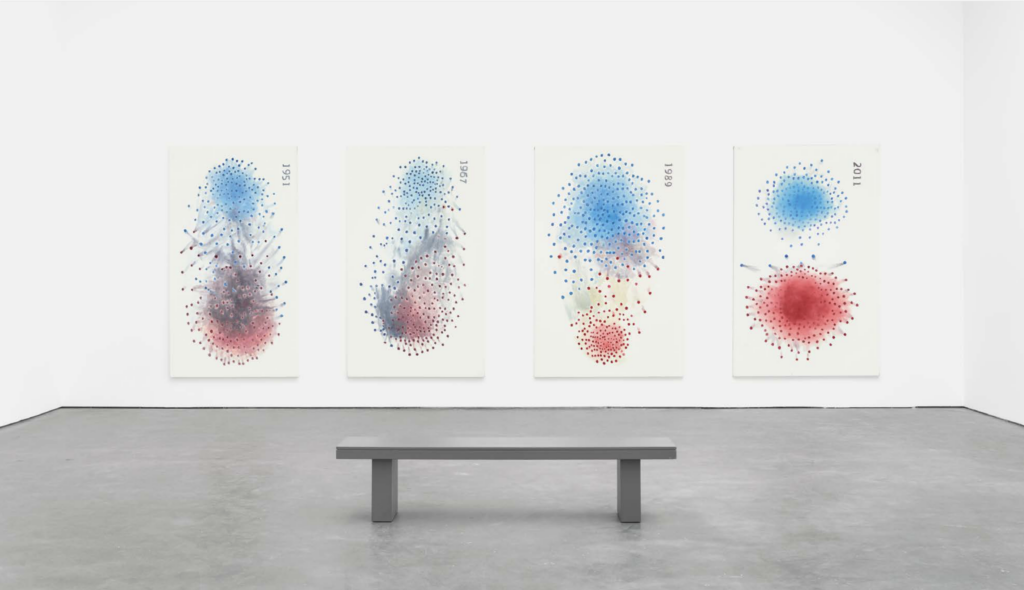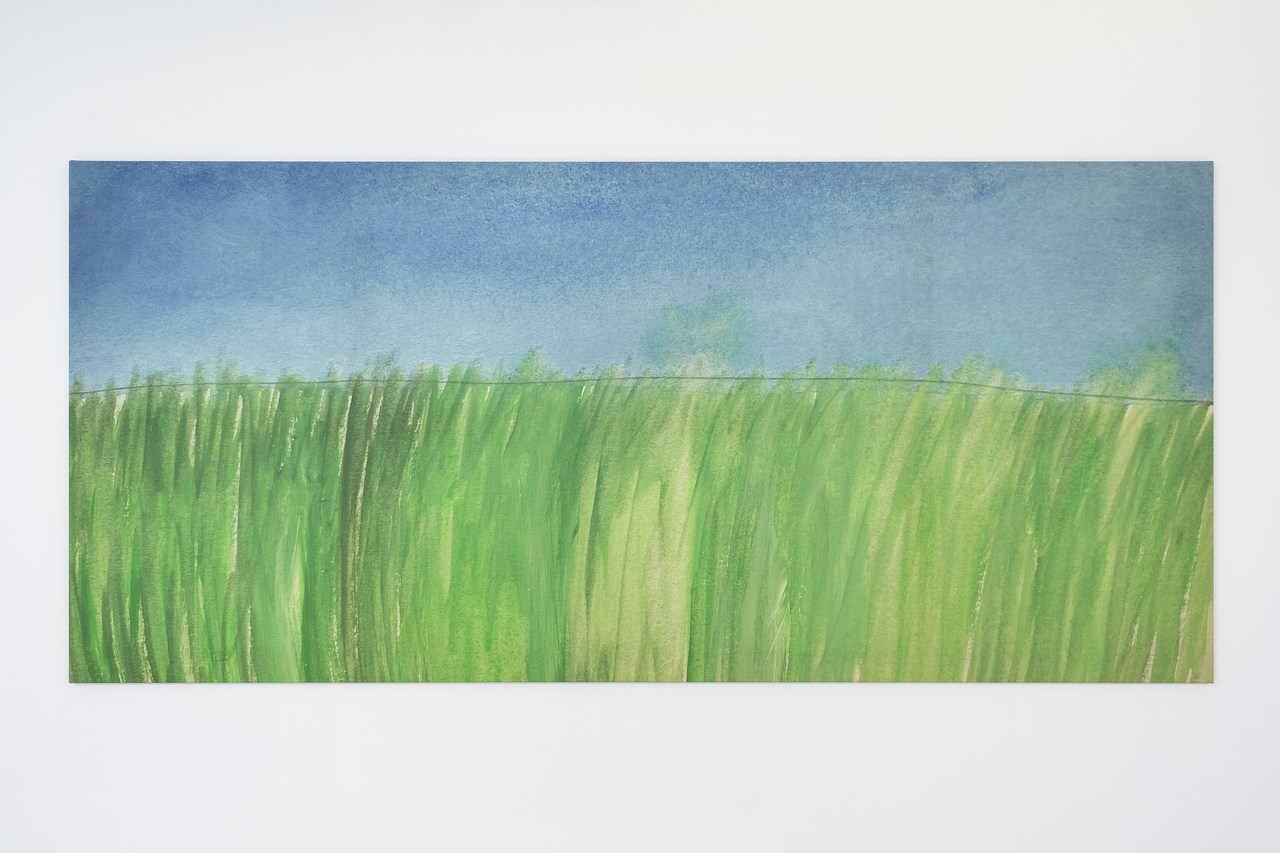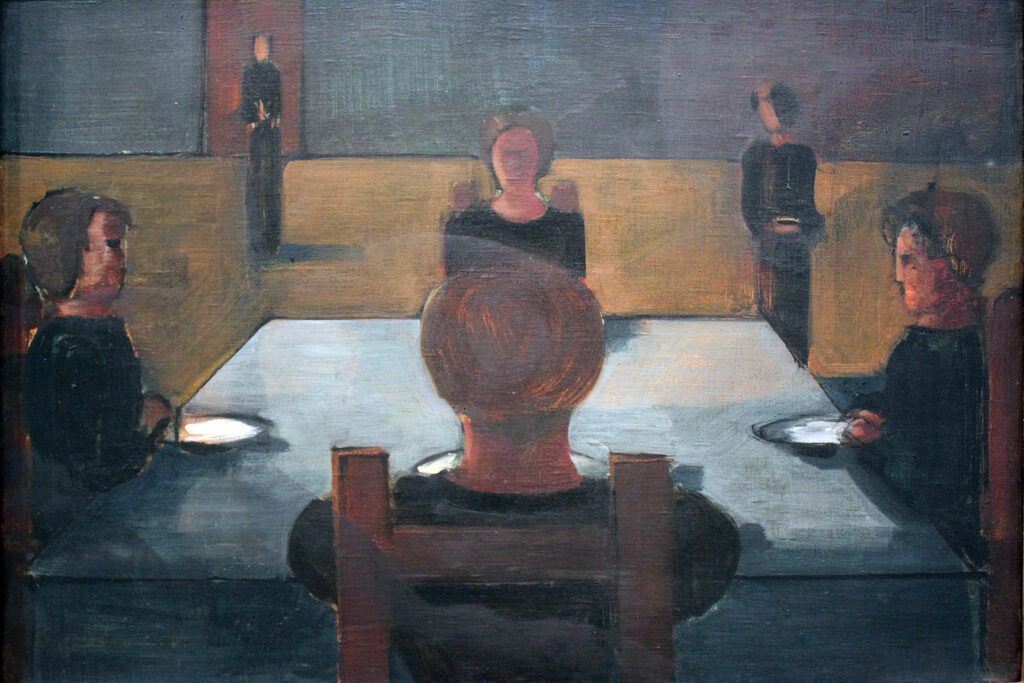Luc Tuymans, Polarisation—Based on a data visualization by Mauro Martino (2021).
Graphing is the practice of visualizing the abstract—the use of the coordinate plane not to map a territory or to demarcate a two-dimensional surface but to track a measurable quantity across space and time, quantities such as position, velocity, temperature, and brightness. Its invention can be traced to Nicole Oresme, bishop of Lisieux, courtier to Charles V, and scholastic philosopher-polymath who held forth at the College of Navarre of the newly founded University of Paris. His Tractatus de configurationibus qualitatum et motuum (Treatise on the Configurations of Qualities and Motions) from 1353 lays out early versions of what we now call functions and the x and y axes, which he referred to as “longitude” (the axis of the independent variable) and “latitude” (the perpendicular axis for plotting the values of the dependent variable). What made these pictures not merely illustrational but statistical “graphs” was Oresme’s radical insistence on presenting the variables in accurate ratio, with some accord of scale between the unit of measurement and the object or subject or process being measured. His key principle, at least when it comes to the visual, is: “The measure of intensities can be fittingly imagined as the measure of lines.”
Not content to have merely created graphing, Oresme also speculated about creating graphs of graphs, so-called complementary graphing that goes beyond the charting of an individual phenomenon into the charting of the relationships between sets or groups of multiple phenomena, an innovation that took the statistical combination of algebra and geometry just up to the border of what would become modern calculus.
It’s striking to note what phenomena—and what relationships—Oresme thought worthy of graphing. His examples include motion and heat and cold, but also varying definitions and degrees of the qualitative, including grief or sorrow, in effect prophesying the future of infographics, which don’t purport to measure just production, consumption, price fluctuations, or the orbits of stars, but also the ebb and flow of human opinion.
This is a profoundly contemporary desire, to metricize and parameterize our own thoughts and emotions, and to create dynamic models from those standards to show—to make seeable—our social and political life.
Copyright
© The Paris Review










